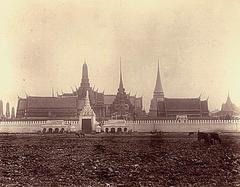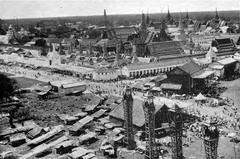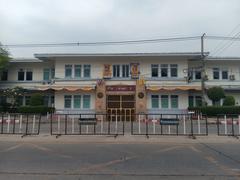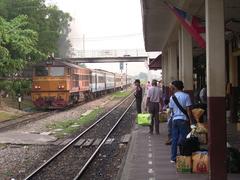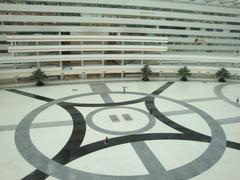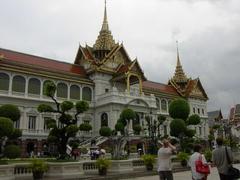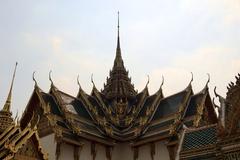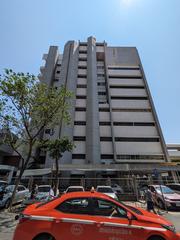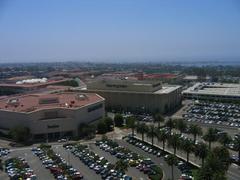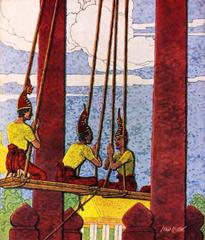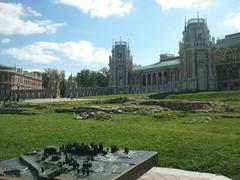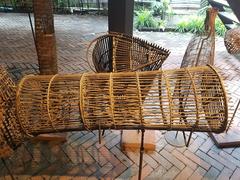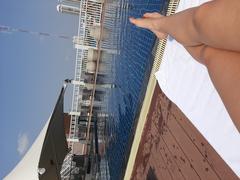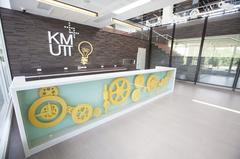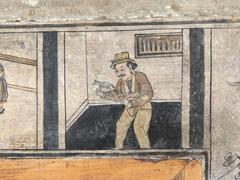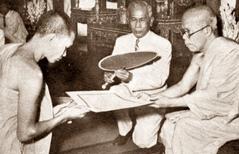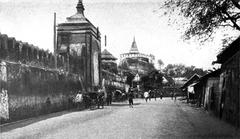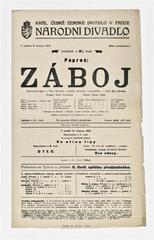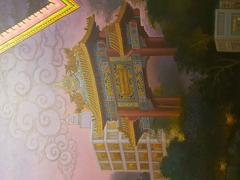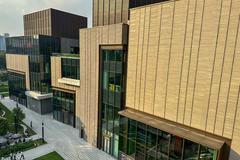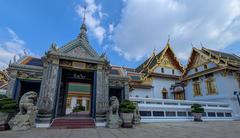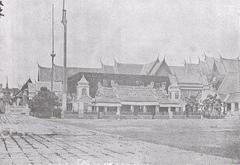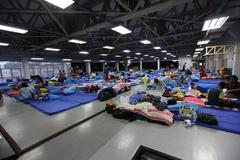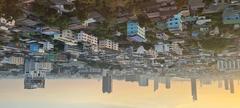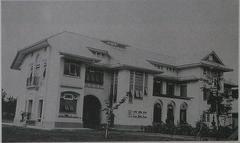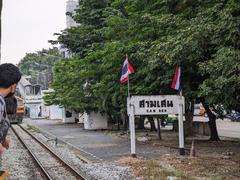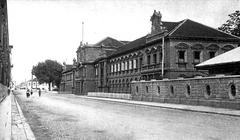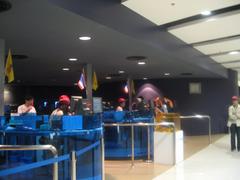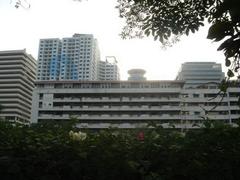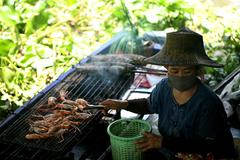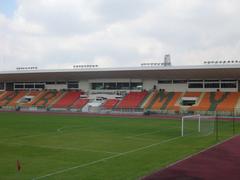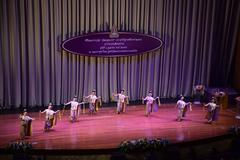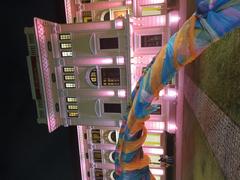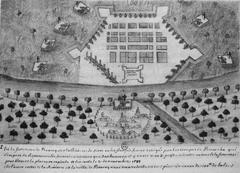
Comprehensive Guide to Visiting Sanam Luang, Bangkok, Thailand
Date: 18/08/2024
Introduction
Sanam Luang, also known as the ‘Royal Field,’ is a historic and culturally significant public square situated in the Phra Nakhon District of Bangkok, Thailand. This iconic location has been a focal point for royal ceremonies, public gatherings, and political events since the late 18th century. Initially established as ‘Thung Phra Men’ or the Royal Cremation Ground during the reign of King Rama I, Sanam Luang has evolved to serve multiple purposes throughout Thai history (Wikipedia). Its transformation and beautification under subsequent monarchs, particularly King Rama IV and King Rama V, have solidified its status as a central hub for both cultural and recreational activities. Today, Sanam Luang is not only a place of historical importance but also a vibrant space for community engagement, reflecting the dynamic interplay between Thailand’s past and present. This guide provides comprehensive insights into the history, significance, and practical information for visiting Sanam Luang, making it an essential read for anyone planning to explore this remarkable site in Bangkok.
Table of Contents
- Exploring Sanam Luang: History, Visiting Hours, and Cultural Significance in Bangkok
Exploring Sanam Luang: History, Visiting Hours, and Cultural Significance in Bangkok
Historical Significance of Sanam Luang
Origins and Early Use
Sanam Luang, translating to ‘Royal Field,’ is a historic and culturally significant public square located in the Phra Nakhon District of Bangkok, Thailand. Its origins date back to the late 18th century, coinciding with the founding of Bangkok as the capital of Thailand. Initially known as ‘Thung Phra Men’ or the Royal Cremation Ground, it was primarily used for the cremation of kings, queens, and high-ranking princes during the reign of King Rama I (Wikipedia).
Transformation Under King Rama IV
In 1855, King Rama IV renamed the area ‘Thong Sanam Luang,’ a name that has since been shortened to ‘Sanam Luang’ in common usage. This change was part of a broader effort to make the name more auspicious and fitting for its evolving role in Thai society (Wikipedia). During his reign, the area began to serve multiple purposes beyond royal cremations, including public gatherings and ceremonies.
Expansion and Beautification by King Rama V
King Rama V significantly expanded and beautified Sanam Luang. Inspired by the gardens surrounding the sultan’s palace in Java, he ordered the planting of tamarind trees around the field’s perimeter. This not only enhanced its aesthetic appeal but also provided shade and a sense of grandeur (Living ASEAN). The field was also cleared of buildings used for previous royal ceremonies to make way for the centennial celebration of Bangkok in 1897, which coincided with King Rama V’s fiftieth birthday (Wikipedia).
Role in Royal Ceremonies
Sanam Luang has been the site of numerous royal ceremonies, including coronations, funerals, and other significant events. One of the most notable ceremonies held here was the royal cremation of King Bhumibol Adulyadej in 2017, which drew massive crowds from across the country (Living ASEAN). The field has also hosted the annual Royal Ploughing Ceremony, a traditional event marking the beginning of the rice-growing season, which underscores its continued importance in Thai cultural and agricultural practices (Thaizer).
Political and Social Significance
Sanam Luang has also been a focal point for political and social activities. It has served as a venue for protests, political rallies, and public gatherings, reflecting its role as a space where the Thai state and its citizens interact. For instance, in 1976, the grounds witnessed a tragic massacre involving corrupt police and militia during a political protest (Wikipedia). More recently, it has been a site for pro-democratic demonstrations, highlighting its enduring significance in Thailand’s political landscape (Cambridge).
Cultural and Recreational Uses
Beyond its royal and political functions, Sanam Luang has been a vibrant cultural and recreational space. It has hosted various public events, including concerts, festivals, and markets. Historically, it was even used for horse racing, golf, and kite flying, activities that attracted both locals and foreigners (Living ASEAN). The area underwent significant renovation in 2010 to improve its facilities and make it a safer and more pleasant place for public use (Thaizer).
Environmental and Conservation Efforts
The tamarind trees planted during King Rama V’s reign have become a symbol of Sanam Luang. However, these trees have faced challenges over the years, including damage from public activities and environmental stress. Efforts have been made to preserve these historic trees, including a rehabilitation plan initiated by the Bangkok Metropolitan Authority (BMA) and supported by conservation groups like Big Trees (Bangkok Post). These efforts aim to ensure that the trees, which have witnessed significant events in Thai history, continue to thrive.
Modern-Day Significance and Visitor Information
Today, Sanam Luang remains a central hub for both tourists and locals. Its proximity to important landmarks such as the Grand Palace, Wat Phra Kaew (the Temple of the Emerald Buddha), and the National Museum makes it a key destination for visitors to Bangkok (This is Bangkok). While access to the field may be restricted during certain royal events, it generally serves as a green oasis in the bustling city, offering a space for leisure and reflection.
Visiting Hours and Tickets: Sanam Luang is typically open to the public 24 hours a day. However, access may be restricted during royal events. No tickets are required for entry.
Travel Tips: Visitors are advised to wear comfortable walking shoes and bring sunscreen, as the area can get quite hot. It’s also recommended to check the local event calendar, as the field often hosts various cultural events and ceremonies.
Nearby Attractions: In addition to the Grand Palace and Wat Phra Kaew, visitors can explore the National Museum, the Bangkok City Pillar Shrine, and the vibrant Khao San Road, all within walking distance of Sanam Luang.
Accessibility: Sanam Luang is easily accessible by public transportation, including buses and boats along the Chao Phraya River. Tuk-tuks and taxis are also readily available.
Conclusion
Sanam Luang stands as a testament to Thailand’s rich cultural heritage and serves as a living monument to the nation’s historical and contemporary significance. From its origins as a royal cremation ground to its current role as a public square for ceremonies, protests, and festivals, Sanam Luang encapsulates the evolving relationship between the Thai monarchy, state, and its citizens. Its strategic location near landmarks such as the Grand Palace and Wat Phra Kaew further enhances its appeal to both tourists and locals. As efforts continue to preserve its historical elements, like the iconic tamarind trees, Sanam Luang remains a symbol of resilience and continuity in the heart of Bangkok. For anyone visiting the city, a trip to Sanam Luang offers not just a glimpse into Thailand’s past but also an opportunity to experience its vibrant present (Living ASEAN, Thaizer).
FAQ
What are the visiting hours for Sanam Luang? Sanam Luang is generally open 24 hours a day, but access may be restricted during royal events.
How do I get tickets for Sanam Luang? No tickets are required to visit Sanam Luang.
What are the nearby attractions to Sanam Luang? Nearby attractions include the Grand Palace, Wat Phra Kaew, the National Museum, the Bangkok City Pillar Shrine, and Khao San Road.
References
- Sanam Luang, 2024, Wikipedia source url
- Sanam Luang Then and Now: A Glimpse from the Past, 2024, Living ASEAN source url
- Sanam Luang Bangkok, 2024, Thaizer source url
- Sanam Luang Attractions, 2024, Lonely Planet source url
- Sanam Luang Cultural Significance, 2024, Cambridge source url
- Saving the Tamarind Trees, 2024, Bangkok Post source url
- Sanam Luang Travel Guide, 2024, This is Bangkok source url
- Festivals and Events in Thailand July 2024, 2024, TAT News source url
- Sanam Luang Community Significance, 2024, Trip.com source url
- Sanam Luang Historical Insights, 2024, Tour Bangkok Legacies source url


